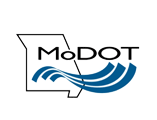With a long-standing commitment to help improve air quality in the St. Louis metropolitan area, the Missouri Department of Transportation (MoDOT) recognizes that ozone pollution is not only extremely unhealthy for residents, but also hurts the economic viability of our region and can even threaten federal highway funding in the state. Since idling vehicles and their related emissions are one of the leading sources of air pollution, MoDOT values the importance of keeping area roadways cleared 24/7 and offers up information about possible congested areas to help reduce air pollution and keep the region’s air quality in healthy ranges.
For starters, MoDOT has eight solar-powered portable message boards along high-traffic interstates and highways that display the daily ozone forecast during the air quality forecasting season and are also used for traveler information in times of major incidents on the highways to help alleviate congestion. Over half a million motorists daily have the opportunity to view these messages and stay informed about ozone pollution levels in the region, so they can plan to modify their commute for the following day. In addition to their smaller portable message boards providing daily air quality information, MoDOT uses its large stationary message boards on red ozone days, as well as places a warning message on its real-time traffic information website. With these three components being used for traveler information, MoDOT has the potential to reach more than a million motorists during critical ozone alerts.
To help further reduce environmental impact, MoDOT’s Gateway Guide program strives to better manage the growing amount of traffic on state-maintained roadways. The Gateway Guide team works around the clock and uses many state-of-the-art devices that, when combined, serve as powerful tools to relieve traffic congestion and improve safety. The program uses real-time traffic information to help reduce traffic delays caused by incidents, work zones and the rising number of vehicles on the highways. By monitoring the roadways, the team can direct the appropriate emergency response forces to those incidents – including departmental emergency operations to clear minor incidents or to direct traffic around major ones. The team also provides this information in several formats for drivers – primarily by social media, text or overhead message signs. Moreover, MoDOT carries out a yearly traffic signal optimization program on arterial corridors, updating timing plans and coordination across designated corridors, which reduces emissions by decreasing travel times and reducing stops and delays on state routes.
Additionally, MoDOT recently entered into a partnership with WAZE as part of the Connected Citizen Program (CCP), which brings cities and citizens together by allowing users to alert fellow motorists of crashes, construction, road hazards or road closures they may not be anticipating. In turn, this enables MoDOT and other government partners to respond more efficiently to accidents and congestion, resulting in one of the most succinct, thorough overviews of current road conditions today.
Beyond these various initiatives that help motorists to do their part for cleaner air, on days when air quality is forecasted to approach unhealthy levels, MoDOT changes its own internal operations so as not to cause excess ozone-causing emissions. A main component involves reducing maintenance operations that may cause traffic congestion, except for safety reasons, on forecasted red ozone days. The organization also engages its employees in the regional clean air effort, sharing the daily air quality forecast with them and encouraging use of alternative modes, such as carpooling, during the ozone season.
For more information on MoDOT’s available resources and their clean air connection, visit modot.org. And be on the lookout for a future article highlighting the Illinois Department of Transportation’s (IDOT) initiatives to help clear the air. To learn more about the link between sustainability and air quality, explore the Clean Air Partnership’s website, like us on Facebook or follow us on Twitter at @gatewaycleanair.

